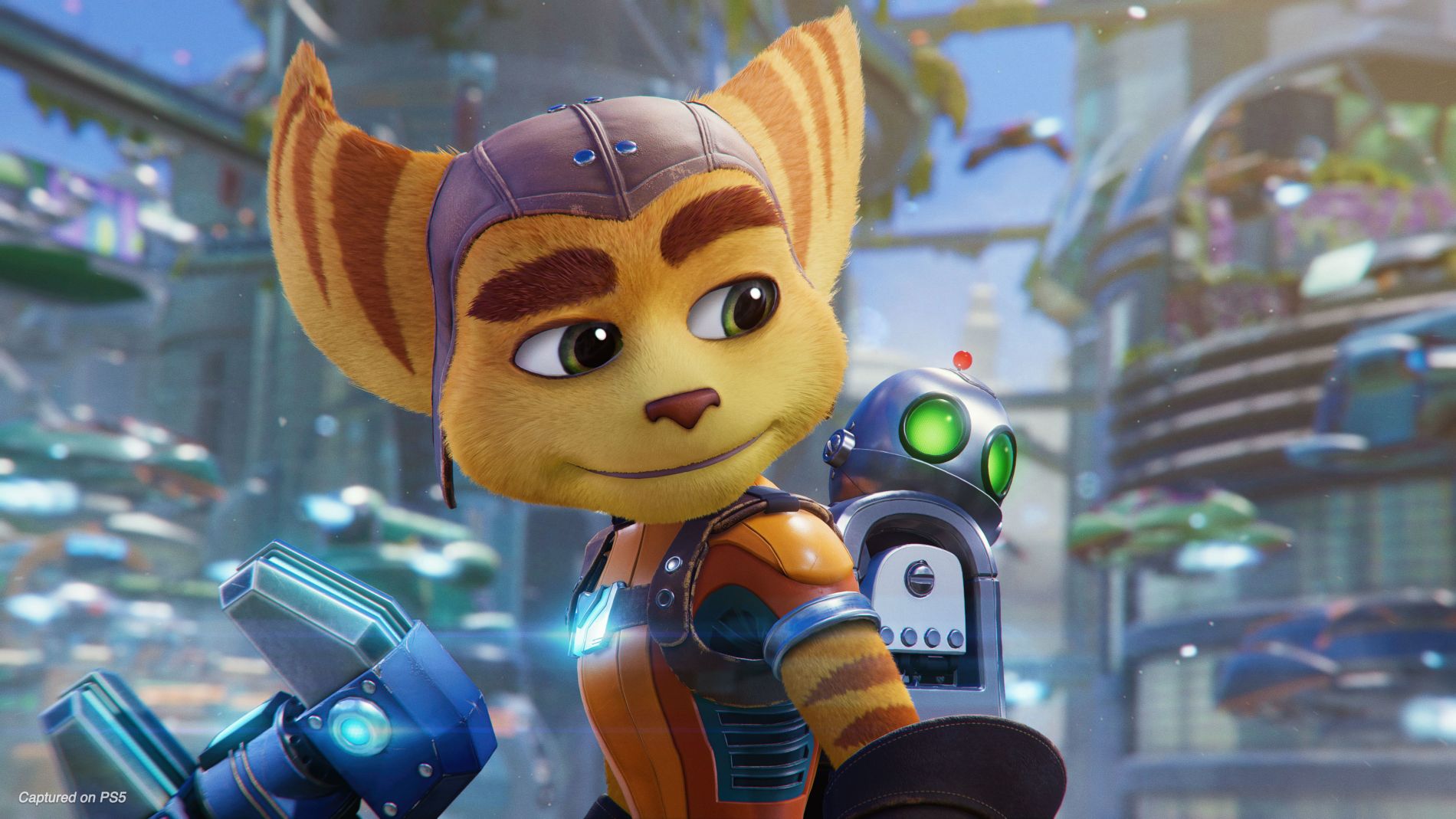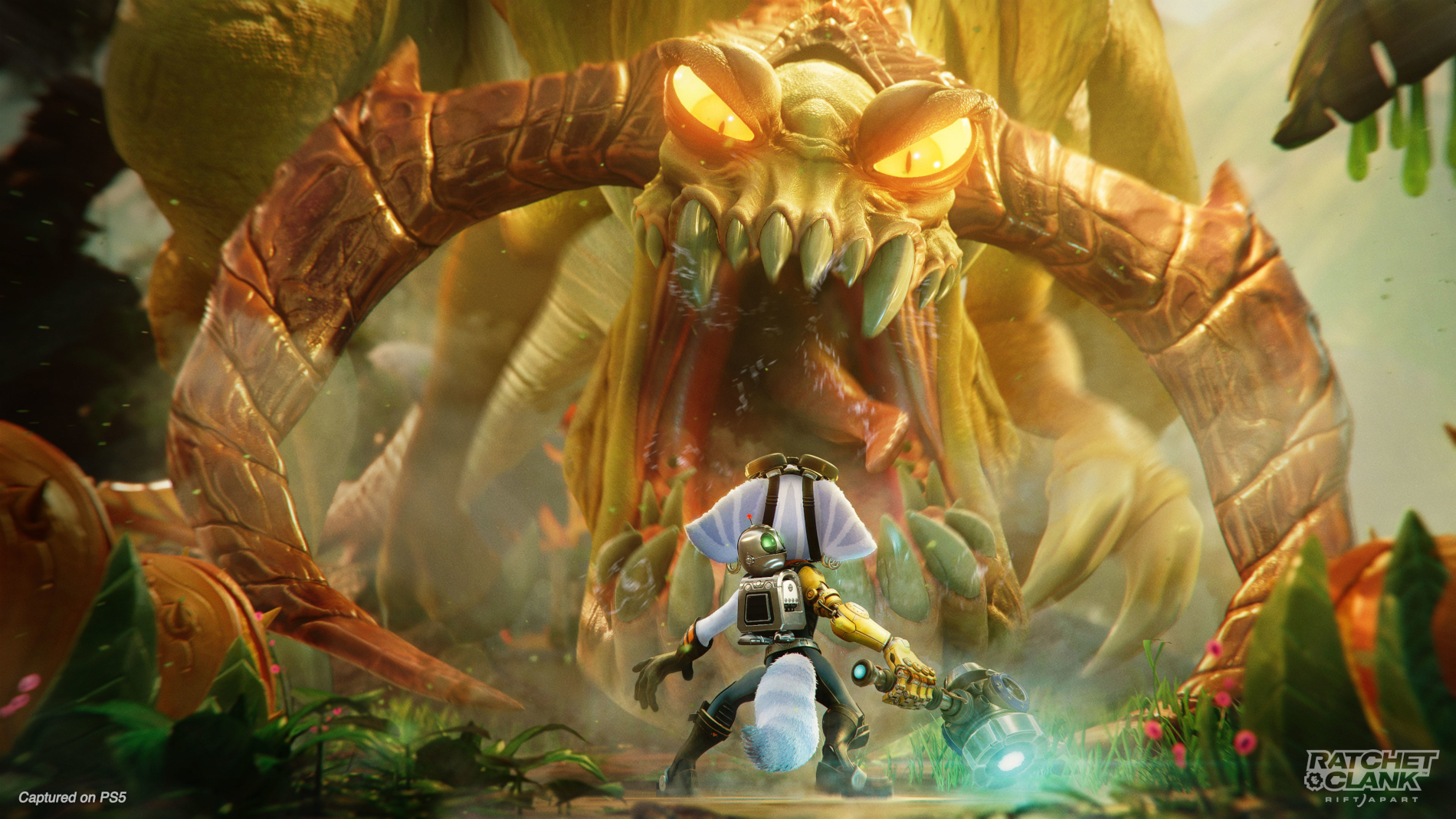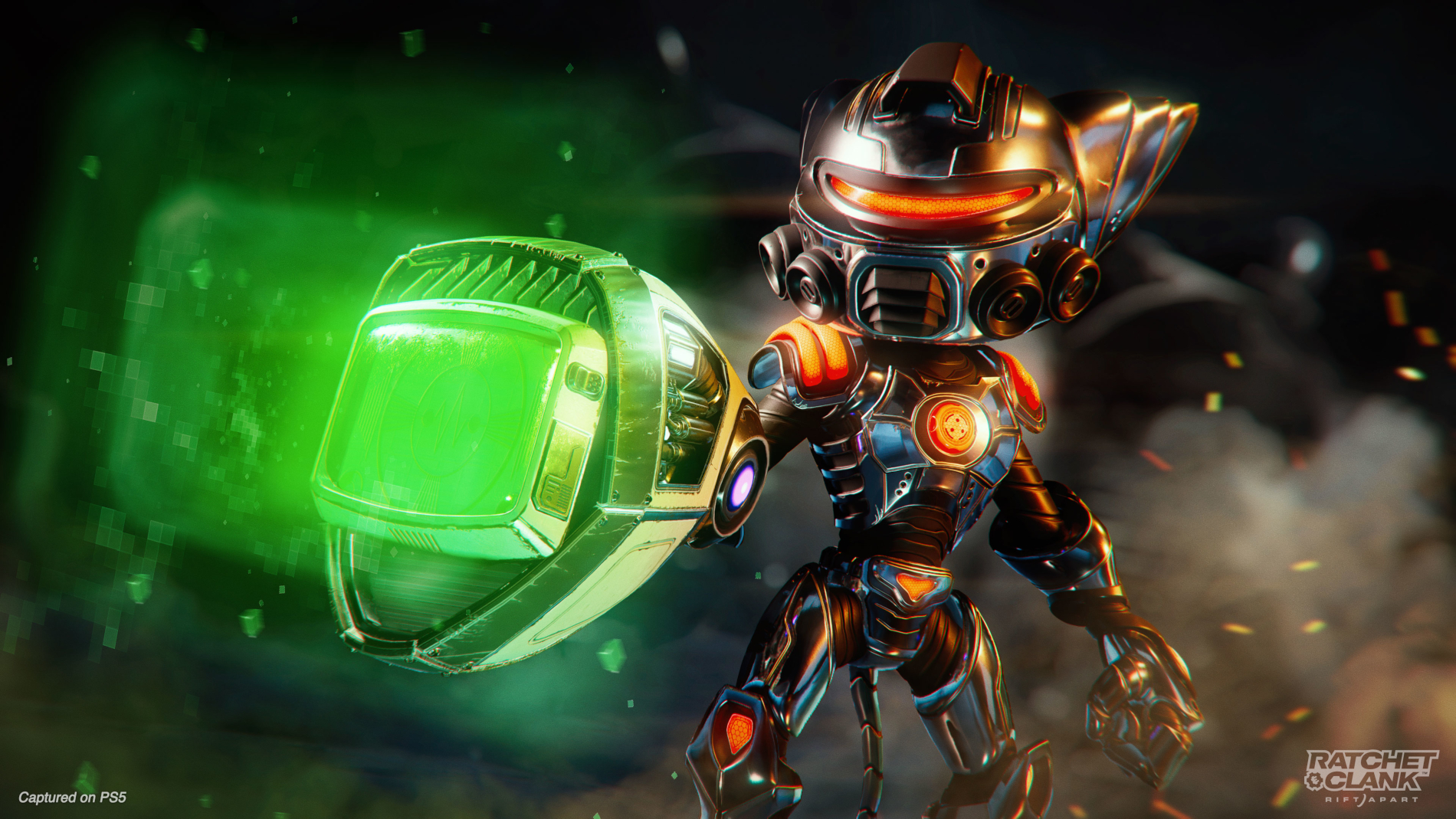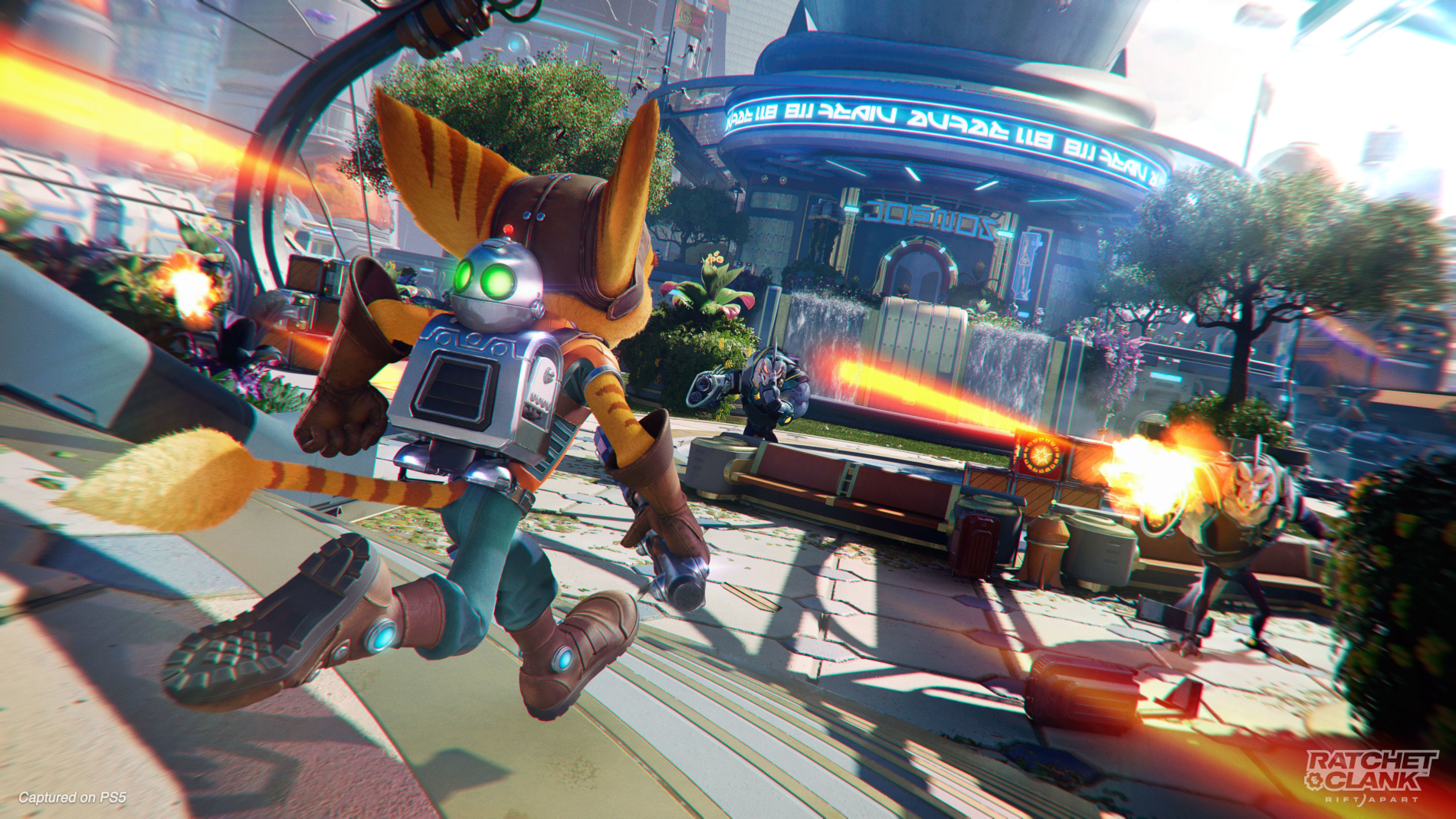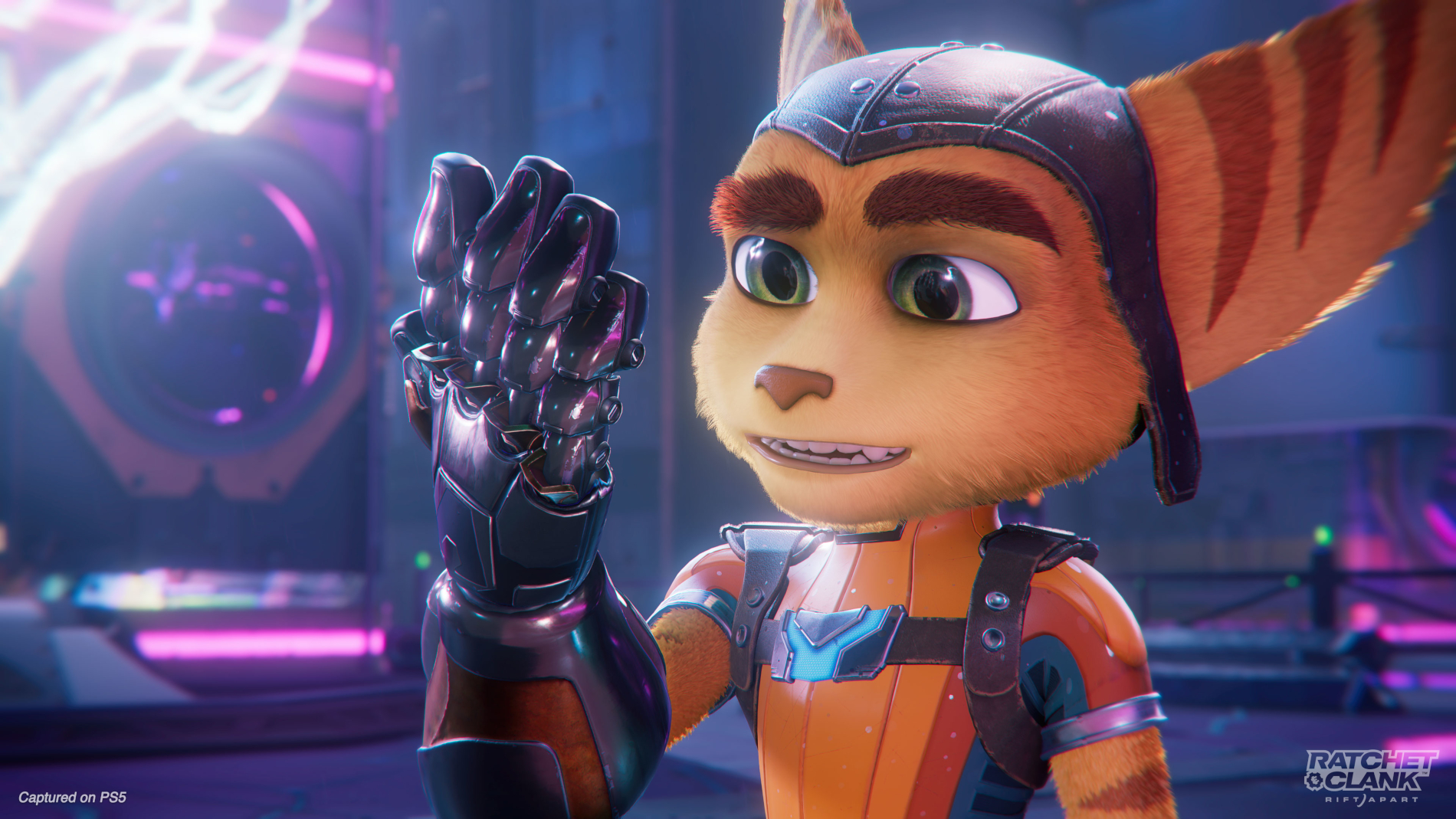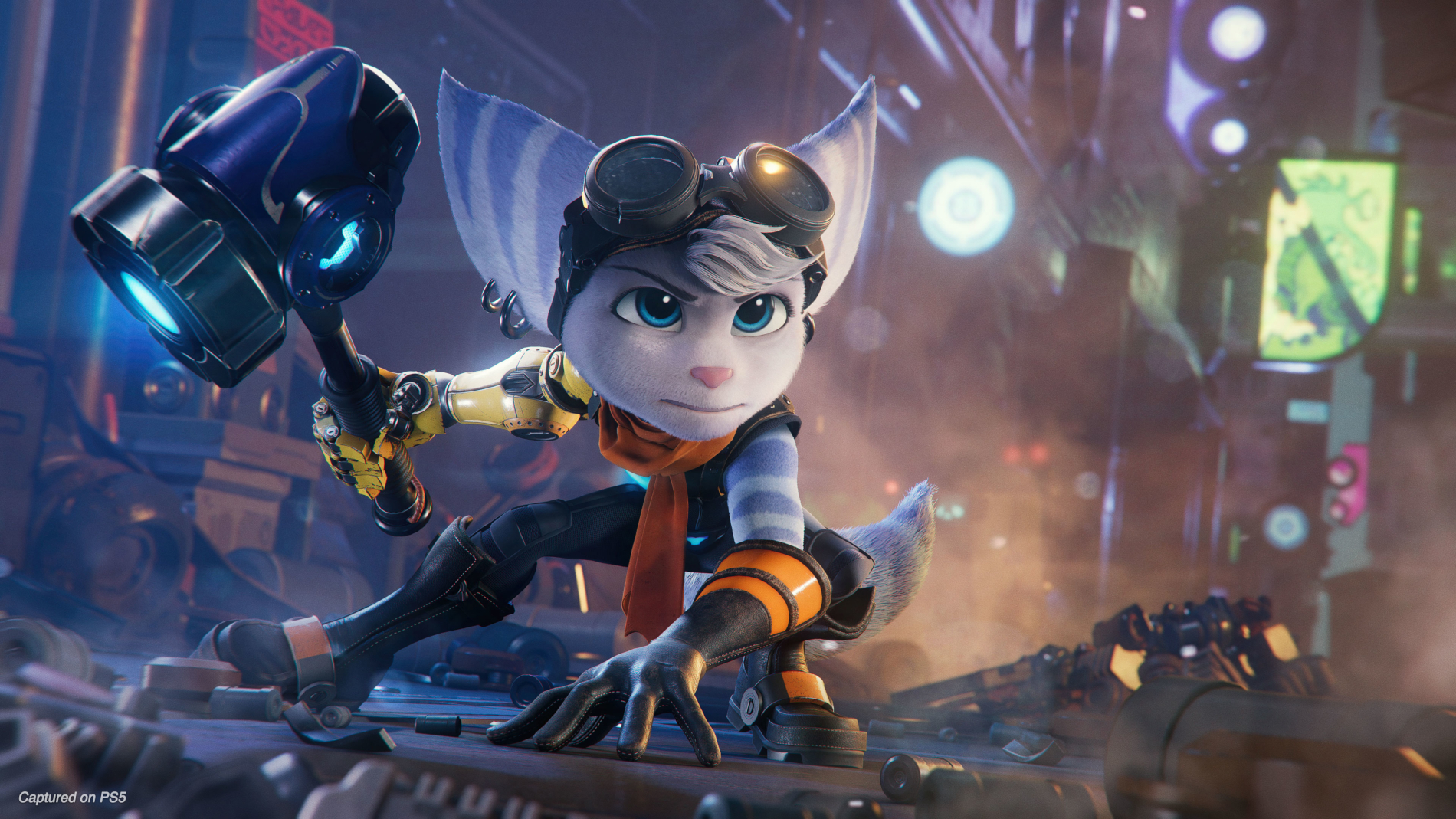Ratchet And Clank: Rift Apart
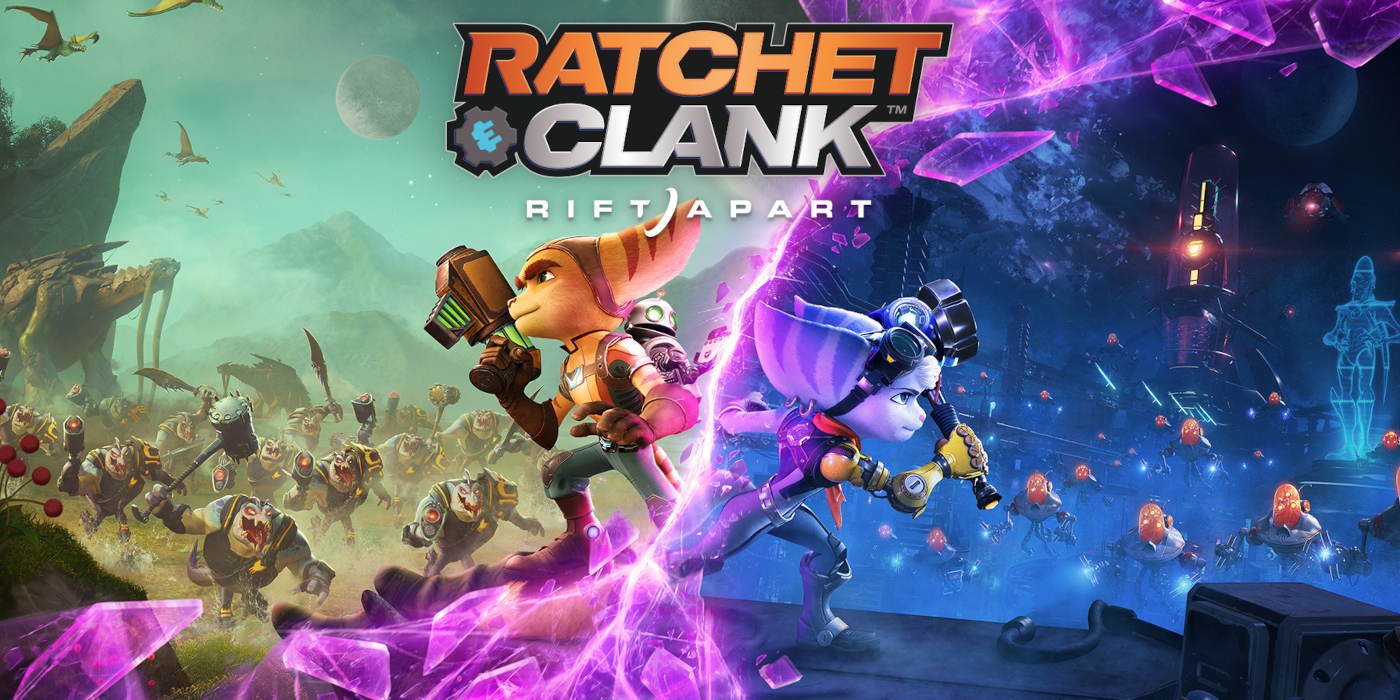
Eight years. That’s how long it’s been since the last new entry in the Ratchet & Clank series. Outside of 2016’s PS4 remake of the first game, I have gone a whole console generation without stepping into Insomniac Games’ crazy universe where a Lombax and a tiny robot team up to save the galaxy. Insomniac seemed to recognise this and, as the PlayStation 5 era gets underway, Ratchet & Clank: Rift Apart has burst onto the scene to not only cure that near-decade long itch, but to showcase the power of the fancy new console. I originally played through the game on its release but a year on since release, it’s time to present my thoughts on it.
At A Glance
| Scores | |
| Visuals | 9/10 |
| Sound | 6/10 |
| Gameplay | 7 /10 |
| Overall | 7 /10 |
| Positives | + Beautiful to look at + Some of the best platforming seen in years + Load times, what load times?! |
| Negatives | – Stale story – Same ol’ glitches – Not much ‘game’ is present |
| Price | £69.99 |
| Our Playtime | 20 hours |
| Available On | PlayStation 5 |
Let me set the scene of Rift Apart. Ratchet and Clank have stepped away from saving the galaxy; we join them as they are being honoured for their past heroics but our favourite Lombax is utterly distracted and wants to find the rest of his race. It’s a plotline that’s been developing for years, and just as Insomniac are about to let him find peace, the series’ main bad guy, Dr Nefarious, has other ideas. Somehow during his assault on the heroic duo, he manages to break space, pulling everyone into an alternate dimension. It’s here Ratchet encounters Rivet, another Lombax who’s leading a resistance against her own Nefarious. Here they must team up to tackle both Nefariouses (Nefarioui?) and save the crumbling dimensions.
The plot is not the most *ahem* riveting, story being told, and after 20 hours felt underwhelming. Another entire dimension should open up the world, but Insomniac has decided to fall back on simply giving established characters a slight twist. Rivet, who was highly promoted from the get-go, is relegated to ‘female Ratchet’ – even her moveset is a carbon copy of her male counterpart. What really irked me is that the humour is as sharp as ever, with a particular highlight being Zurkon Jr taking the role of murderous psychopathic robot as Zurkon Snr becomes a pacifist. It was a confusing juxtaposition, as I loved the humour throughout the game -it made me laugh more than it ought to- but the main plot was tried, tested and annoyingly stale.
While I could go on about the downsides of the story, the same cannot be said about the gameplay. During the opening parade, I was handed the keys to the game while the hapless Captain Qwark fills the crowd in on what’s been happening for the last few years. Reacquainting myself with Ratchet & Clank’s action platform style felt like picking up just where I left off. Since the last game came out at a time when there were only six Fast and Furious films, this tutorial felt warranted and gave me time to knock the rust off before being flung into the game.
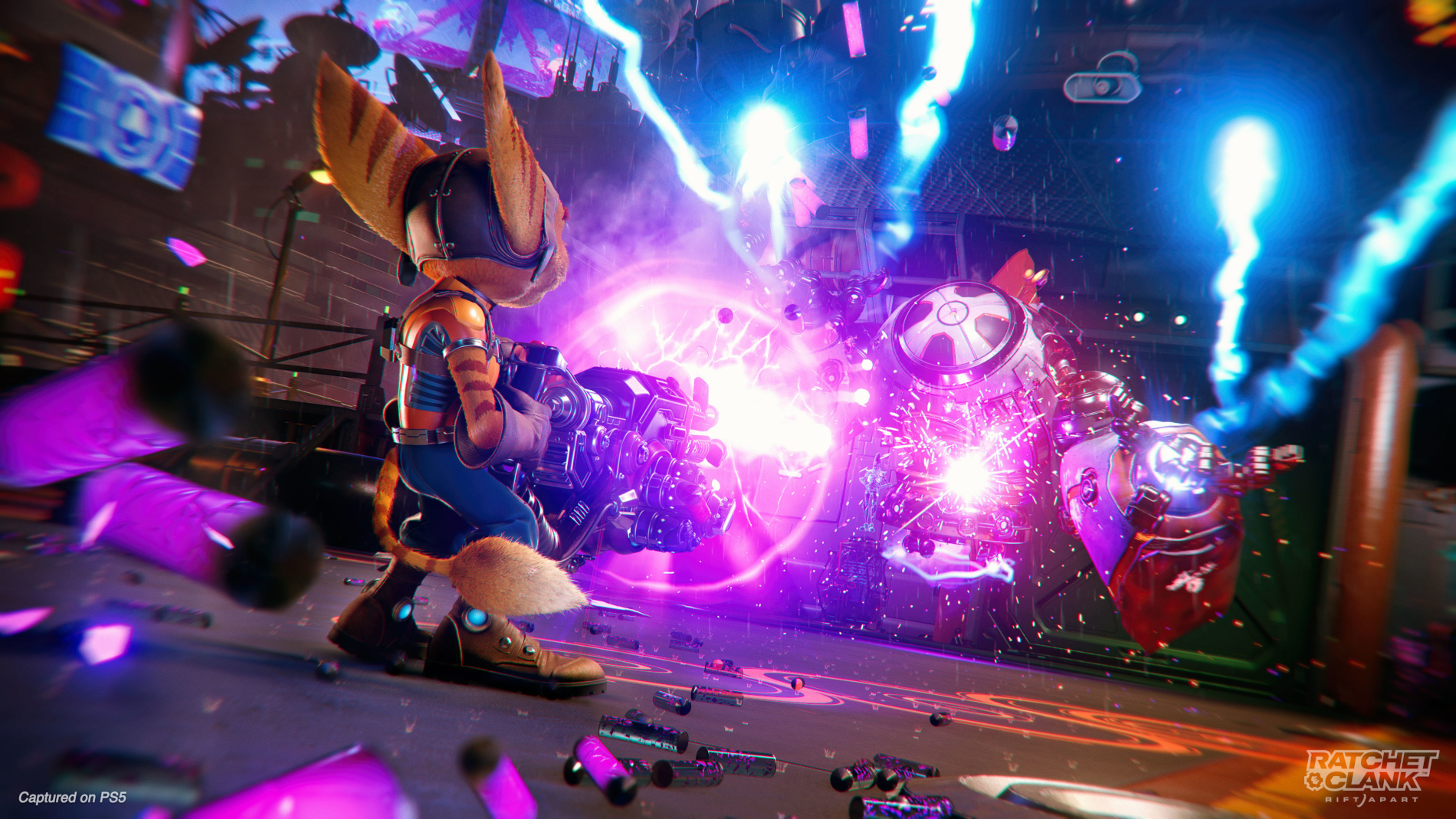
Once the game opens up, it is clear each level appears to be vast. Nefarious City is Rift Apart’s first level and it feels like a living city with NPCs carrying out their daily business. As huge as each level is, not everywhere can be explored and as it’s a 3D platformer it is curiously limited in what can be done. The core concept is simply: land on a level, look for an item, activate a small cutscene, fight a few enemies, use the item on the main objective, activate another cutscene, fight the boss and move on to the next level. The trouble is there is no balance in this pattern and Rift Apart chooses to focus more on the cutscenes,than offering any control over the game.
It felt like the game was tightly holding my hand all the time. Prompts would guide me through the levels, telling me where to go and how to achieve my objectives. On top of this, there is a limited degree of freedom to explore. If I did go off book, there was a sense that all of life would implode in on itself. I felt playing Rift Apart was like watching a hyperactive child in a park – running from one bit of equipment to another in quick succession, only enjoying one thing for the smallest of moments before zipping off to the next toy. Everything felt urgent – even the music was as dramatic as a Christopher Nolan epic, and the constant pressure to move on didn’t give me enough time to process everything. If I did stop for any length of time, it felt as if the game was breathing down my neck, ready to whip away my controller privileges.
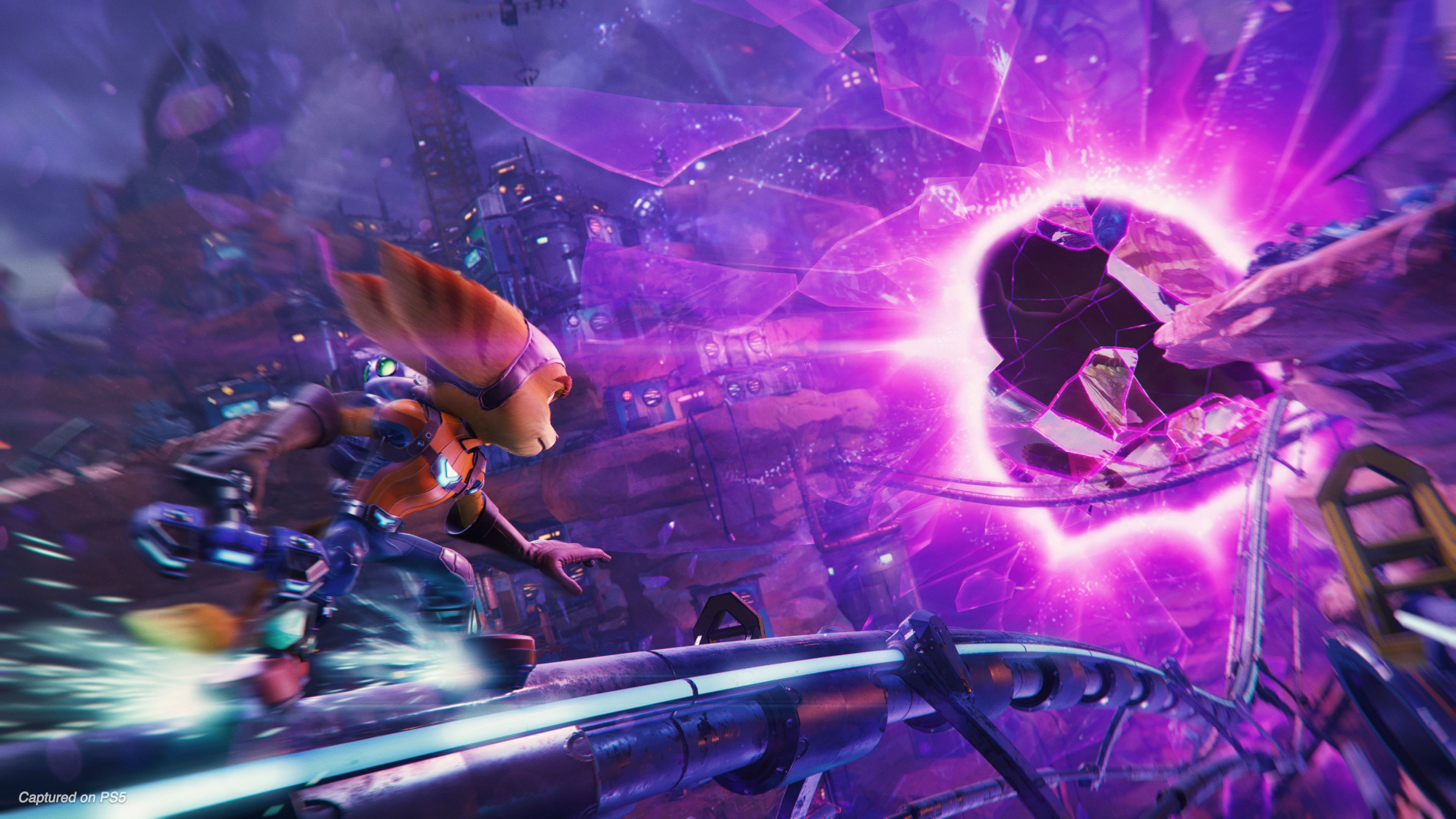
This was a shame because Rift Apart’s core gameplay was phenomenal. I have never played a game with such tight controls. Ratchet and Rivet felt like a joy to control. The pin-point accuracy of moving and jumping just feels natural but the biggest improvement is with shooting. The DualSense controller audiably clunks into place when the game loads up and depending on the weapon used, affects the pressure needed to fire it. The haptics are used cleverly too; when using boosters to skate around the environments, each motor rumbles with the corresponding foot hitting the floor.
Along with the traditional platform elements, there are cool new mechanics to explore. Early in the game, Ratchet gains the ability to harness rifts. If one appears on screen, then the Lombax is able to pull space towards him with a tap of a button. This instantly zips him to a different part of the map, which not only helps with traversing the huge maps, but can be utilised in combat; when being pinned down in one area, I could locate a small rift and teleport behind enemies and finish them off. These might not be groundbreaking features on their own but when it’s all considered as one package, Rift Apart contains the best 3D platforming experience I’ve come across.
The gameplay isn’t the only area of praise; Rift Apart slapped me around the chops with just how pretty it is. From the moment I pressed Start, the menu seamlessly faded away, flowing into the first cutscene. Insomniac must be wizards, as the game snapped to life in milliseconds, with no loading times to speak of at all. In my bewilderment, the only thing I noticed was a blip here or there, but nothing like staring at a black screen for 30 seconds. It felt like being back in the 16-bit era of instant loads.
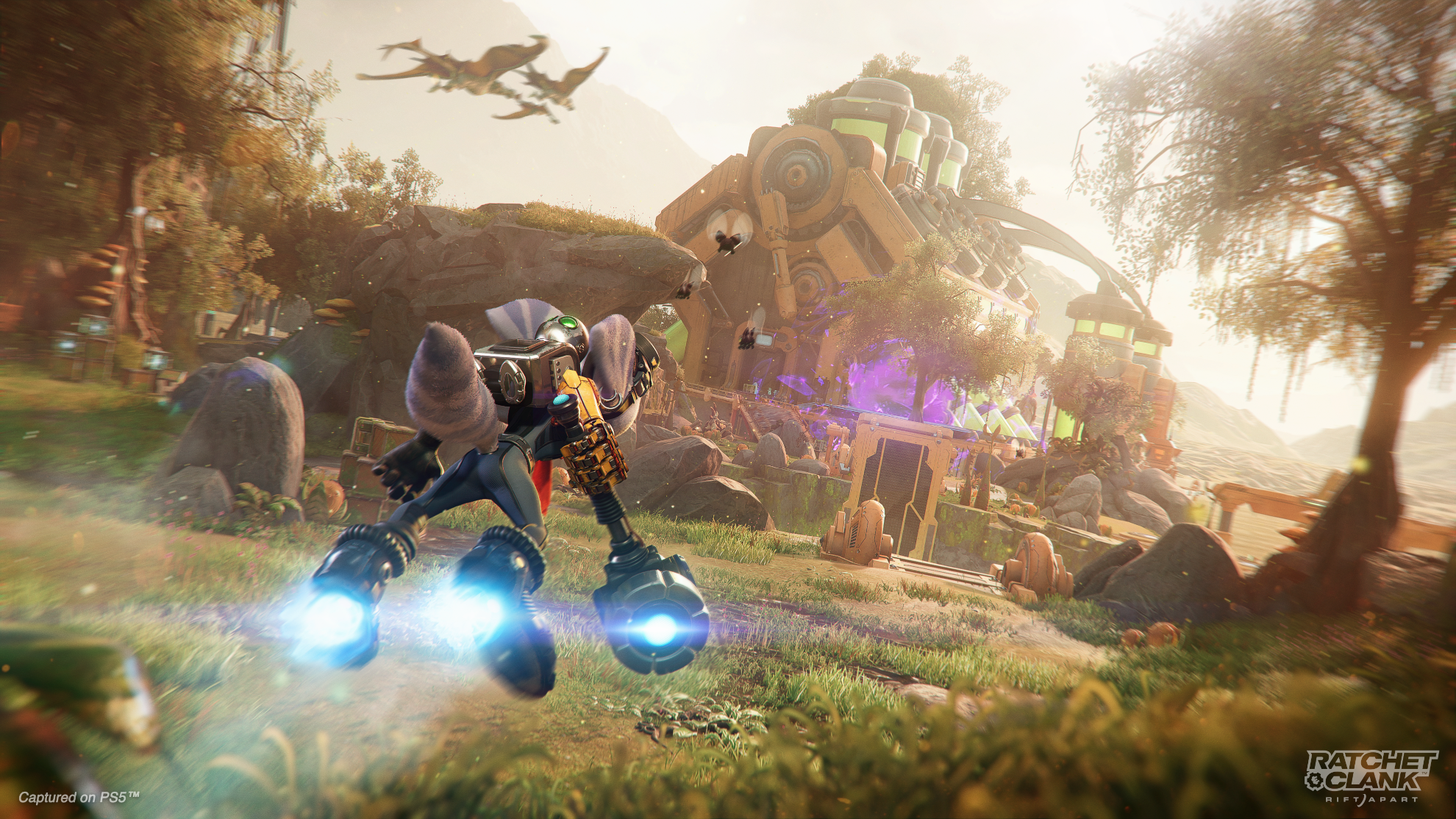
The crisp visuals popped out of the screen and even though flying taxis are staples of Ratchet games, everything looked polished and new. It became clear that Insomniac had devoted a lot of time getting the look of Rift Apart spot on. All of the game’s levels are equally gorgeous and striking to look at. The characters are equally stunning, particularly seeing the minute movements of Rivet and Ratchet’s fur. This detail was so fine, the pair of Lombaxes would look right at home next to Sully from Monsters Inc.
With Ratchet & Clank: Rift Apart pushing the edge of graphical capabilities, sacrifices sadly had to be made. There’s the usual choice to prioritise either visuals or frame rates. The native 4K mode chops the frame rate to 30fps and offers very little gain unless you were utilising photo mode. Rift Apart is best when running at 60fps, as it contributes to that incredible gameplay. On top of this, occasionally assets would refuse to load, even whole levels would simply disappear, causing me to fall through a floor. Patches have been deployed to counter this, but these glitches have been present since the first Ratchet game on PS2, so with Rift Apart, being so close to visual perfection, it was disappointing to see them crop up again.

As a technical showcase of what the PlayStation 5 can do Ratchet & Clank: Rift Apart sets the bar and sets it high. The game is absolutely beautiful with visuals that give Hollywood animations a run for their money. Insomniac have worked their magical voodoo to minimise load times to the point of taking us back to the Mega Drive era. But, from a gaming perspective, Rift Apart plays it very safe. It’s the same story of Ratchet’s longing to find his people and Dr Nefarious attempting to take over the galaxy. These have been part of the series for the best part of two decades, and even the addition of Rivet, who was greatly mishandled, wasn’t enough to shake up the established formula.
Don’t get me wrong, all of the elements of a brilliant platformer are present and the gameplay is phenomenal while it lasts. Out of a 20 hour 100% run, only 5-7 hours of Rift Apart is spent playing the game, while the rest of the time was spent watching cutscene after cutscene full of explosive set pieces. So long as I didn’t deviate from the set path, those few hours where I had control were absolute perfection, but it felt like Insomniac Games was focused more on how pretty they can make a videogame look rather than producing a memorable game that fans have waited eight years for.
